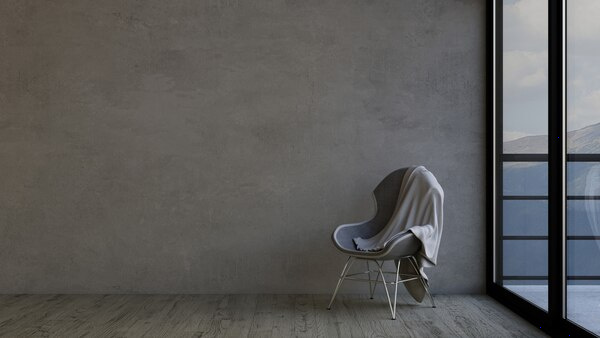Living Room Design: Transform Your Space with Minimalist Touch
Creating a minimalist living room doesn't mean sacrificing comfort or style; rather, it focuses on simplicity, functionality, and serene aesthetics. This design philosophy seeks to create a calming and inviting space with fewer distractions, allowing you to unwind and refresh. By incorporating minimalist elements into your living room, you can transform it into a haven of peace and sophistication.
1. Start with a Neutral Palette

A neutral color palette is the cornerstone of minimalist design. Soft whites, creamy beiges, and light grays create a serene atmosphere and provide the perfect backdrop for a minimalist living room. These colors help open up the space and reflect natural light, making it feel bigger and brighter. Adding a pop of color through accessories or artwork can introduce personality without overwhelming the room.
2. Embrace Quality Over Quantity
Minimalism prioritizes quality over quantity, urging you to invest in well-made, timeless pieces of furniture. A few thoughtfully chosen items, such as a comfortable sofa, an elegant coffee table, and a functional media console, can make a significant impact. By focusing on durability and design, you ensure that these pieces not only serve their purpose but also stand the test of time.
3. Optimize Space with Smart Storage
A clutter-free environment is essential to a minimalist living space. To achieve this, opt for furniture with built-in storage options. Ottomans, coffee tables with hidden compartments, and sleek shelving units can help keep your living room organized and tidy. By minimizing visible clutter, you can maintain a clean and serene atmosphere conducive to relaxation.
4. Prioritize Functional Layout
The layout of your living room should focus on enhancing flow and functionality. Arrange furniture in a way that encourages movement and conversation without overcrowding the space. Consider incorporating multi-purpose pieces like a sectional sofa or a nesting table set, which can adapt to different needs and occasions.
5. Incorporate Texture and Natural Elements
Although minimalism centers on simplicity, incorporating texture and natural elements can add depth and warmth to your living room. Soft textiles like wool throws and cotton cushions offer comfort, while wooden accents or houseplants introduce an element of nature. These additions can subtly enhance the minimalist aesthetic while making the space feel more inviting.
6. Illuminate with Thoughtful Lighting
Effective lighting is crucial in a minimalist living room, as it highlights the simplicity of the design while creating an inviting ambiance. Natural light is ideal, so ensure that windows are unobstructed to let in as much daylight as possible. Complement this with thoughtfully placed lamps and ambient lighting fixtures that add warmth without overwhelming the space.
7. Keep Décor Simple and Personal
Decorative elements in a minimalist living room should be sparse but meaningful. Choose a few statement pieces that resonate with you, such as a piece of artwork, a travel souvenir, or family photos in simple frames. This approach ensures that every element in your living room brings joy and value, maintaining the minimalist ethos of intentionality.
Transforming your living room into a minimalist oasis doesn't require an overhaul of everything you own. By implementing just a few of these strategies, you can create a space that's both tranquil and stylish, offering a perfect retreat from the chaos of daily life. Minimalism in interior design invites you to focus on what truly matters, allowing for a more mindful and fulfilling living experience.